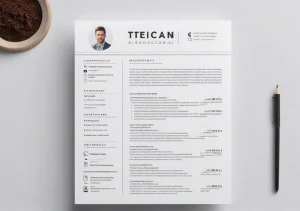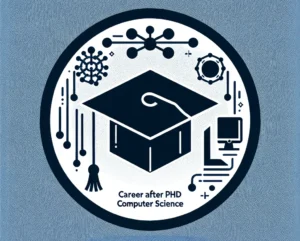In the fast-paced world of tech, keeping your career on the right track requires more than just technical skills. Self-assessment is the compass that helps you navigate your journey, ensuring you align your aspirations with your actions. It’s about knowing where you stand and where you want to go.
Self-assessment techniques are essential for tech professionals eager to enhance their career development by identifying strengths, pinpointing areas for improvement, and paving the way for personal growth. But that’s just the surface; there’s a wealth of strategies and examples that can elevate your self-assessment game into a powerful tool for career advancement.
Key Takeaways:
- Regularly conduct self-assessments to identify strengths and skill gaps, aligning your capabilities with industry demands.
- Utilize a mix of assessment tools like LinkedIn Skill Assessments and Pluralsight IQ to gain insights and track your development.
- Set SMART goals based on your self-assessment insights to create a clear and actionable career advancement plan.
What is Self-Assessment in Career Development?
Self-assessment is all about reflective inquiry into your skills, interests, and professional values.
It acts as a personal compass in navigating your career path, especially in the ever-evolving tech industry. Through self-assessment, you gain insights into what you’re good at, what you enjoy, and what areas need development.
This process often involves examining your past experiences, gathering feedback, and identifying your career aspirations. For tech roles, where new tools and trends pop up constantly, understanding how your skills align with current industry demands is vital.
You might ask yourself questions like: What projects made me feel most fulfilled? Which technologies am I drawn to? This introspection leads to informed choices about upskilling or pivoting into new areas.
Practically, you might use online self-assessment tools and platforms, like StrengthsFinder or personal journaling, to chart your growth. These practices can uncover unique strengths and highlight areas for improvement, making you a more competitive candidate.
Why is Self-Assessment Crucial for Tech Careers?
In tech, the landscape evolves fast, making self-assessment particularly essential for career growth. One of the biggest challenges in this field is the rapid pace of change—new programming languages, frameworks, and tools are regularly introduced. To stay relevant, you need to consistently evaluate whether your skills match what employers are seeking.
Consider how self-assessment helps you pivot if needed. For instance, if you’ve been a front-end developer but find back-end technologies intriguing, assessing your existing skills can guide a strategic shift into that new area.
Additionally, many professionals face burnout or dissatisfaction in their roles. Taking the time for self-assessment can help identify if you’re in the right job or if you need a change in responsibilities or even employers.
Key Challenges in Tech
- Skill Obsolescence: The rapid pace of tech innovation can render skills outdated quickly.
- Diversity of Roles: With numerous specializations available, knowing your passion can direct your focus.
- Work-Life Balance: Self-assessment can highlight if a tech role is draining your energy or if your values align with your job.
Self-assessment not only helps align your skills with your career goals but also acts as a preventive measure against job dissatisfaction. This process is about aligning your personal journey with the dynamic nature of the tech industry—an ongoing dance of skills, interests, and opportunities.
How to Conduct a Skills Inventory?
Creating a skills inventory isn’t just about listing what you know; it’s about aligning those skills with your career aspirations. Here’s how to get started:
-
Identify Your Career Goals : What do you want to achieve in your tech career? Whether it’s transitioning to a new role or climbing the ladder in your current position, having clear goals is essential.
-
List Your Technical Skills : Write down the programming languages, frameworks, tools, and technologies you’re skilled in. Be specific. For instance, instead of just saying “JavaScript,” mention “React.js” or “Node.js” if applicable.
-
Evaluate Your Soft Skills : Don’t forget about the soft skills. Think about your communication, teamwork, problem-solving, and adaptability. Write examples of how you’ve demonstrated these skills in the workplace or during projects.
-
Rate Your Proficiency : Assign a proficiency level to each skill you listed. Use a simple scale: 1 (beginner) to 5 (expert). This self-rating can give you a clearer picture of where you stand.
-
Seek Feedback : Share your inventory with trusted colleagues or mentors. They may provide insights you hadn’t considered or validate your self-assessment.
-
Update Regularly : Treat your skills inventory as a living document. As you gain new skills or experience, revisit and update it. This practice keeps you aware of your growth and prepares you for new opportunities.
By approaching your skills inventory thoughtfully, you ensure it truly reflects your potential and readiness for your next career move.
What Self-Assessment Tools Can You Use?
The right self-assessment tools can make a world of difference in your career planning. Here are some standout options specifically tailored for tech professionals:
- LinkedIn Skill Assessments: This feature allows you to take quick tests on various topics. Successfully passing these assessments not only showcases your skills but can enhance your profile visibility, making you more attractive to recruiters.
- Pluralsight IQ: This tool assesses your technical skills across different domains. After completing a test, you’ll receive a score and personalized learning paths to help you boost your skills further.
- CareerFoundry’s Skill Gap Analysis : This free tool helps identify gaps in your skills based on your career objectives. It’s a straightforward way to see where you need to focus your learning efforts.
- Myers-Briggs Personality Test (16Personalities) : Understanding your personality type can be immensely valuable. Reflecting on your working style and interactions can help you identify which roles in tech may suit you best.
- Codecademy’s Skill Checklists : For those looking to sharpen coding skills, Codecademy offers checklists that map skills to specific jobs, helping you see where you stand and what you need to learn.
- Google Career Certificates : While not a self-assessment tool per se, completing one of these certificates provides structured learning and a recognized credential. It can help guide your learning based on identified skill gaps.
By utilizing these resources, you can gain a sharper focus on your skills and how they align with your career aspirations. Don’t hesitate to explore multiple tools to find what resonates best with your learning style and goals.
How to Set SMART Goals Based on Self-Assessment?
Setting SMART goals is one of the best strategies to transform your self-assessment insights into clear, actionable career steps. SMART stands for Specific, Measurable, Achievable, Relevant, and Time-bound. Let’s break this down:
- Specific : Goals should be precise. Instead of saying, “I want to improve my coding skills,” specify “I want to learn Python for data analysis.”
- Measurable : It’s important to quantify your goals. Ask yourself, “How will I know when I’ve achieved this?” For example, “I’ll complete three data analysis projects by the end of the quarter.
- Achievable : Your goals should stretch you but still be attainable. If you know next to nothing about Python, maybe set a goal to “complete an introductory Python course online within one month.”
- Relevant : Make sure your goals align with your overall career objectives. If you aspire to be a data scientist, investing time in Python is highly relevant.
- Time-bound : Set deadlines to create a sense of urgency. “I’ll finish my course by June 30th.” And stick with it. Often look back at this deadline and try to work towards it.
By following these SMART criteria, you can turn vague aspirations into a tailored plan of action. For instance, after assessing your current skills, you might set a goal to “read one technical book and apply one new technique at work each month.” It’s all about clarity and direction that propels you forward.
What Role Does Feedback Play in Self-Assessment?
Feedback is like a compass—it helps you navigate your self-assessment journey. Seeking insights from peers and mentors dives deep into your strengths and areas for improvement. When you ask for feedback, consider these practical steps:
- Choose the Right People : Identify colleagues or mentors whose opinions you value. They should understand your work and the industry.
- Be Specific : Instead of asking broad questions like, “What do you think?” try something more targeted, like, “Can you give me feedback on how I handled the last project?”
- Diversify Perspectives : Get diverse feedback by asking different peers or stakeholders involved in various aspects of your work. This will give you a comprehensive view.
- Embrace Constructive Criticism : Not all feedback will be positive, and that’s okay. Use it to sharpen your skills. If someone points out a gap in your tech knowledge, view it as an opportunity to grow.
Feedback not only improves your self-awareness but also builds your network. Consider pairing your self-assessment with a regular feedback loop, perhaps every quarter. Even informal check-ins can help you adjust your career path as you get real-time insights from those around you. Taking this approach makes the process dynamic, allowing you to evolve and adapt continually.
How to Create a Personal Development Plan?
Crafting a Personal Development Plan (PDP) is like mapping out a unique journey for your career in tech. Start by identifying your goals. What skills do you want to build? Maybe it’s mastering a programming language or stepping into leadership. Write these down clearly.
Next, assess your current skills against your goals. A simple table can work wonders here: list your skills on one side and mark your comfort level with each from beginner to expert. This will give you a snapshot of where you stand.
After that, outline specific action steps for reaching your goals. For example, if you aim to learn Python, one action step might be to enroll in an online course. Make sure to set realistic timelines—be firm but flexible, allowing room for adjustments.
It’s also crucial to include a feedback mechanism. Regular check-ins, perhaps every month, can help you see what’s working and what’s not. This might involve discussing progress with a mentor or even self-reflection.
Finally, don’t forget to celebrate small wins along the way. Completing a challenging project or gaining a new certification deserves a nod of recognition.
It all adds fuel to keep you motivated and focused.
What’s the Impact of Continuous Self-Assessment?
Constant self-assessment paves the way for long-term success in your tech career.
By routinely evaluating your skills and progress, you stay aligned with industry trends and your personal aspirations. This practice helps in identifying skill gaps early, allowing you to address them before they become barriers.
It cultivates a growth mindset, where you’re more open to feedback and change. This is vital in tech, where change is the only constant. Plus, regular self-reflection sharpens your ability to set achievable goals based on real insights, not guesswork.
To keep it practical, incorporate these self-assessment techniques regularly:
- Monthly Skills Review : Set aside time each month to assess what you’ve learned. This can be a quick recap of courses completed or practical projects undertaken.
- Feedback Seek : Actively seek feedback from peers and supervisors. A simple “What do you think I could improve on?” can yield insightful responses.
- Project Reflection : After completing a project, take time to evaluate what worked well and what didn’t. Document these observations to reference for future projects.
By making self-assessment a regular part of your routine, you not only enhance your expertise but also boost your career satisfaction and marketability—key components in a fast-evolving field.
Recent Trends in Self-Assessment Techniques
Self-assessment in the tech industry has seen some significant shifts recently. Professionals are now embracing a mix of traditional approaches and innovative tools to take charge of their career development. Interactive assessments are gaining traction, giving folks the chance to evaluate their skills in real-time through platforms like Codility or HackerRank.
For example, HackerRank offers a vast array of pre-built coding challenges that assess various programming languages and technical skills, while Codility includes tools for live coding sessions and plagiarism detection to ensure assessment integrity. These platforms facilitate a more engaging and efficient hiring process as companies seek to better assess candidate skills in a competitive tech landscape. For more information on coding assessment tools and their evolution, see HackerRank.
These tools not only assess technical abilities but also offer insights into problem-solving styles and situational awareness.
Another trend is leveraging peer feedback. While self-evaluation is critical, hearing from colleagues can provide a fresh perspective. Many teams now adopt tools like 15Five or Lattice, which foster a culture of continuous feedback. This approach gives tech professionals a clearer picture of how their skills stack up against others in similar roles.
Soft skills assessments have also entered the spotlight. With an increasing emphasis on collaboration and communication in tech, platforms like BetterUp and Myers-Briggs have led to more holistic assessments. They help tech professionals understand their strengths in areas like emotional intelligence and interpersonal skills, which are crucial for team dynamics.
Lastly, AI-driven assessment tools are revolutionizing the self-assessment landscape. Tools like Skillsync analyze user data to identify strengths and weaknesses automatically.
This allows for personalized development plans tailored to individual career paths, keeping things relevant and actionable.
Quick Questions-Answers
What’s the best way to start a self-assessment?
Begin by listing your current skills and comparing them against job descriptions for roles you aspire to. Focus on both technical and soft skills.
How often should I perform a self-assessment?
Aim for a self-assessment every six months to ensure you’re on track and adjusting your goals based on industry changes.
Can self-assessment tools be used for team evaluations?
Absolutely! Many self-assessment tools allow for team functionalities, providing insights on overall team skills and dynamics.
What should I do if my self-assessment reveals skill gaps?
Identify specific resources or courses that target those gaps and create a timeline for acquiring those skills.
Is it worth it to seek external assessments?
Yes, external assessments can provide an unbiased perspective on your skills and help validate your self-identified areas for growth.



